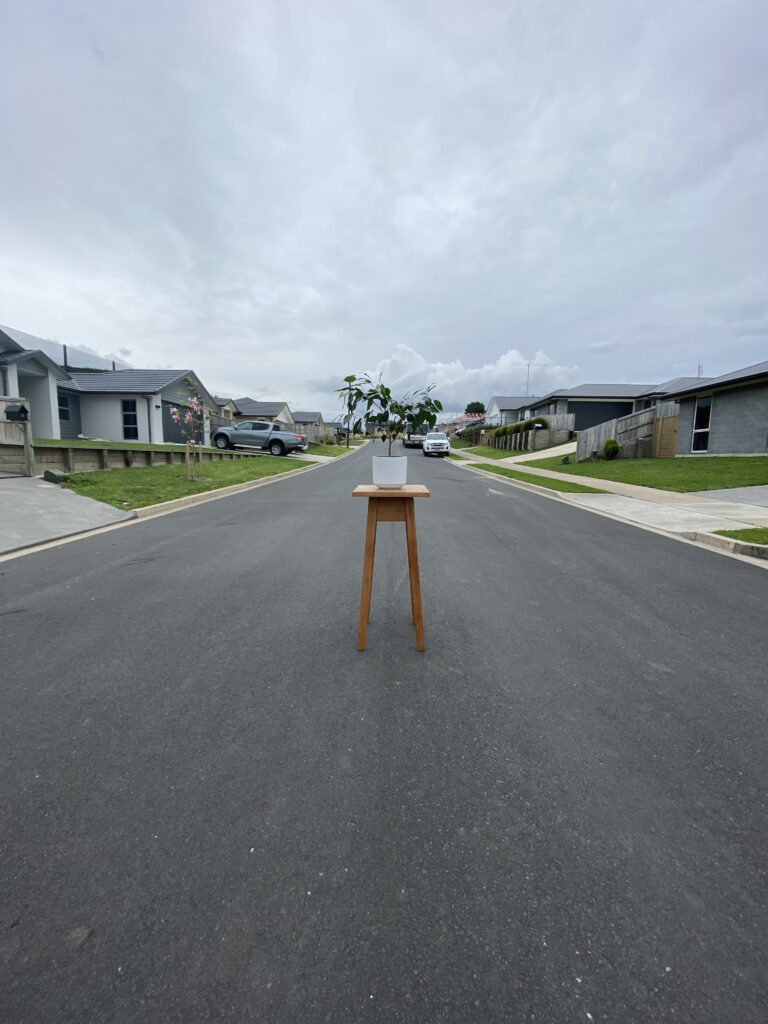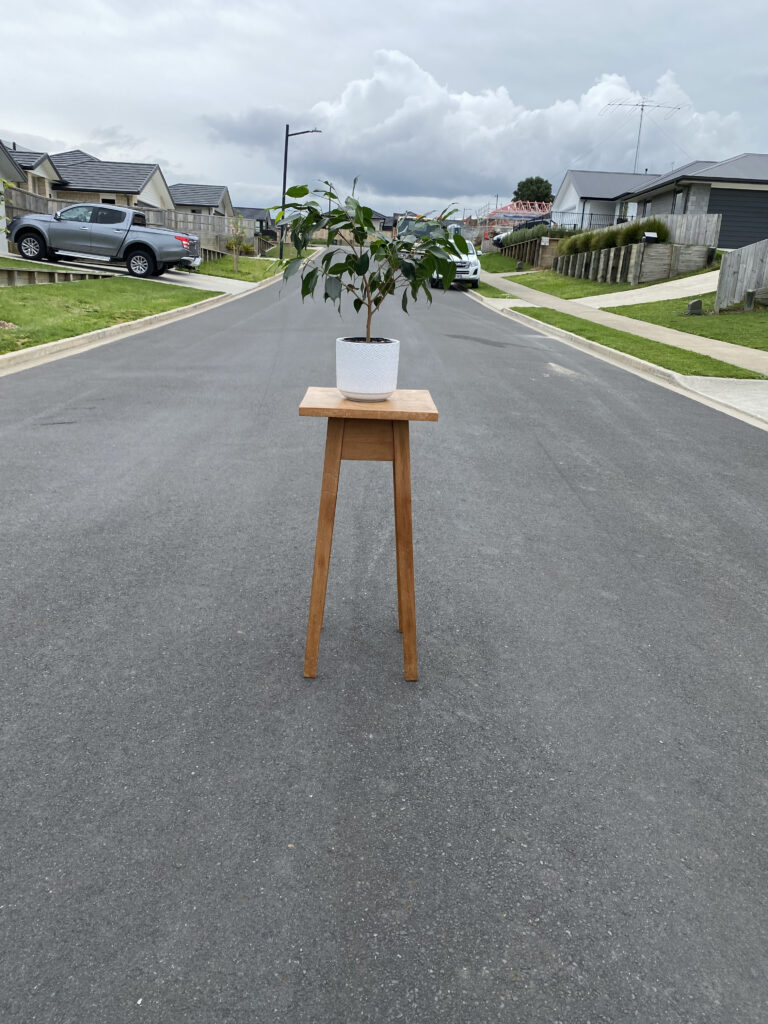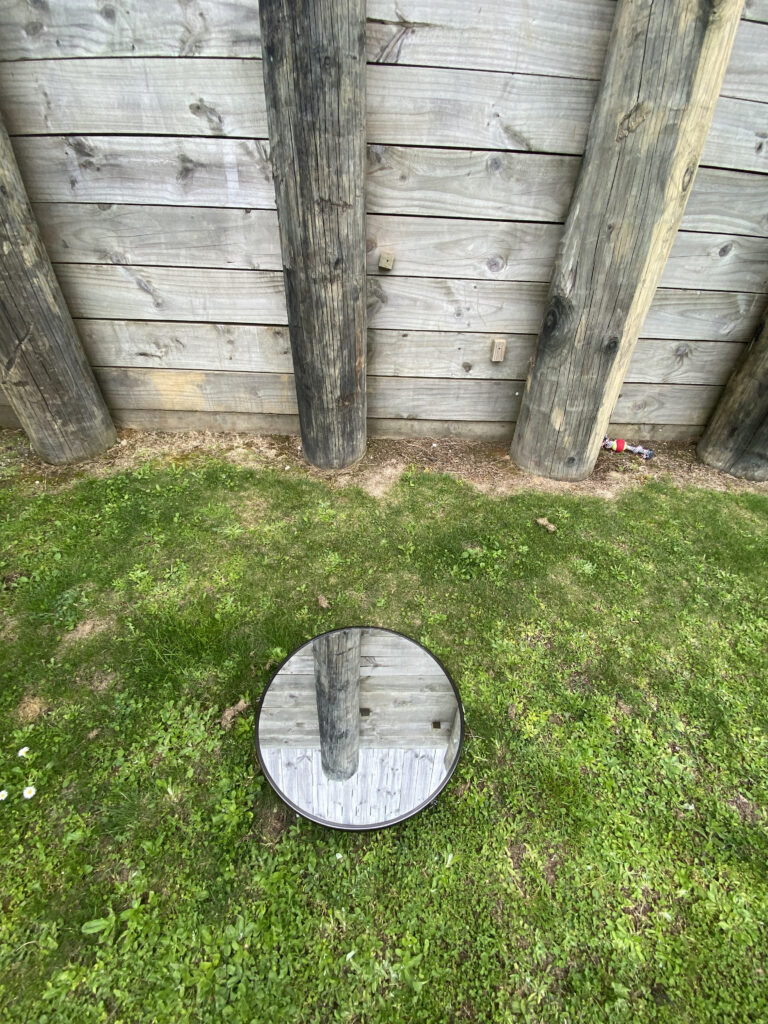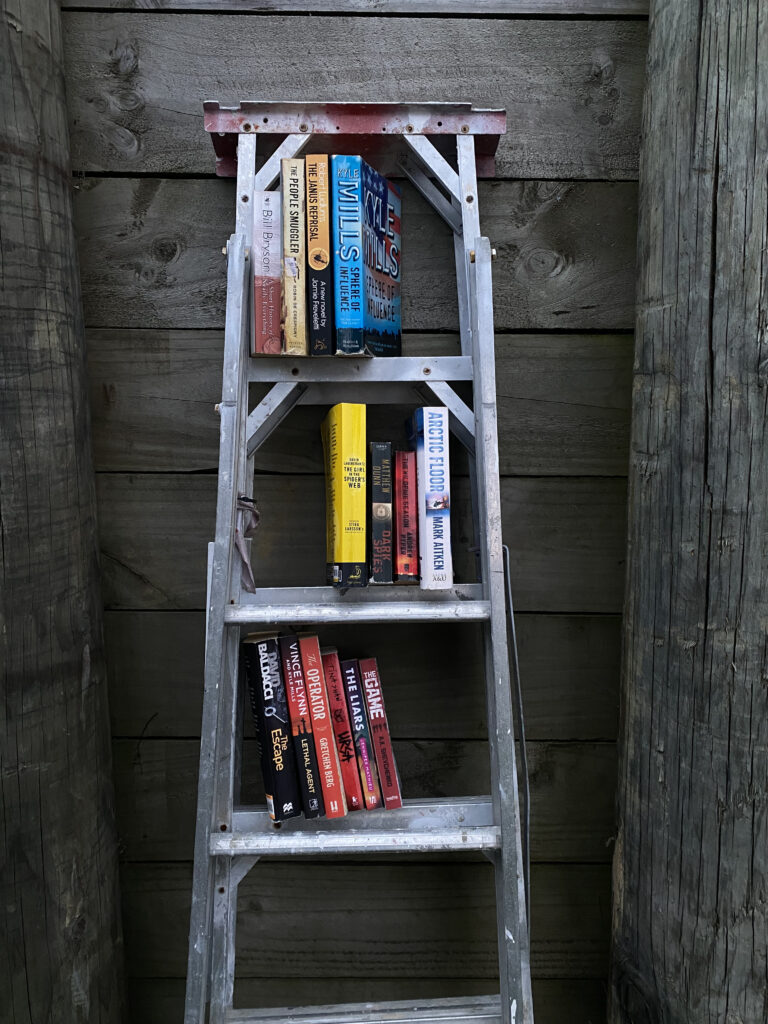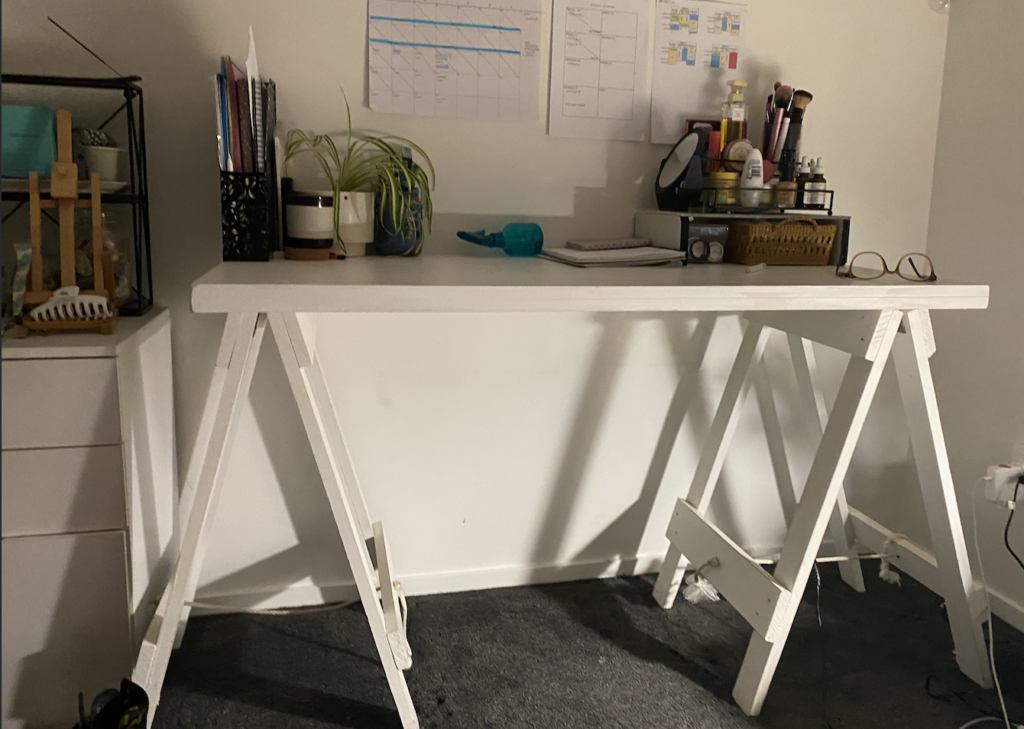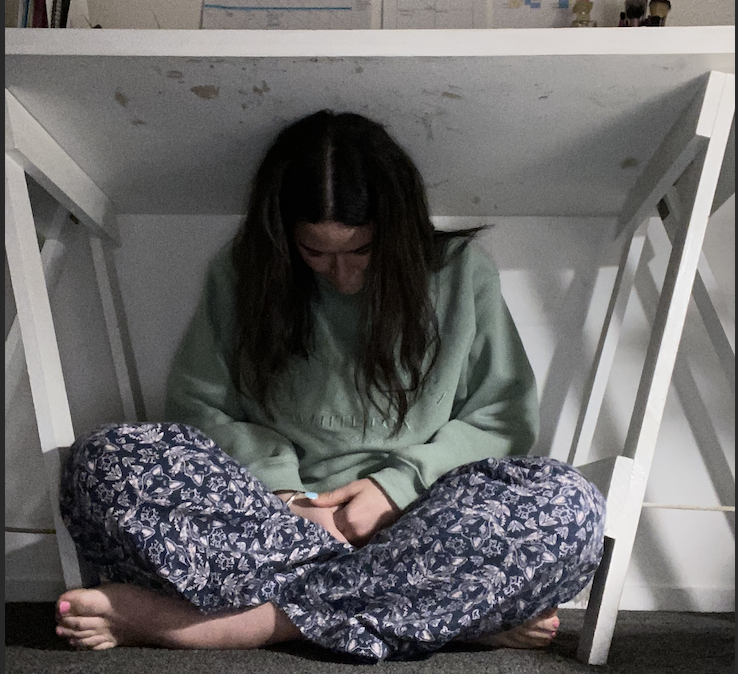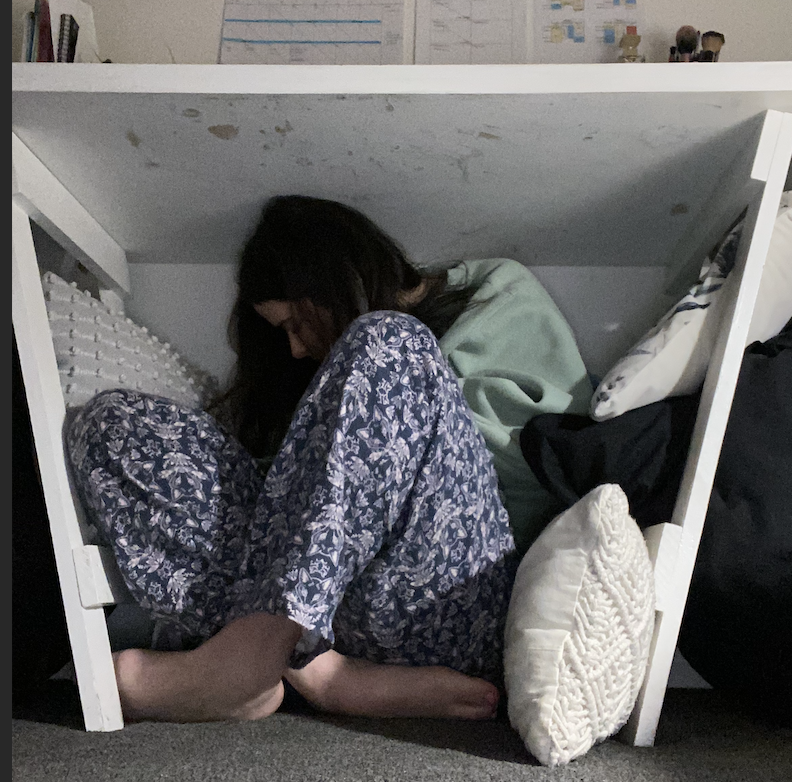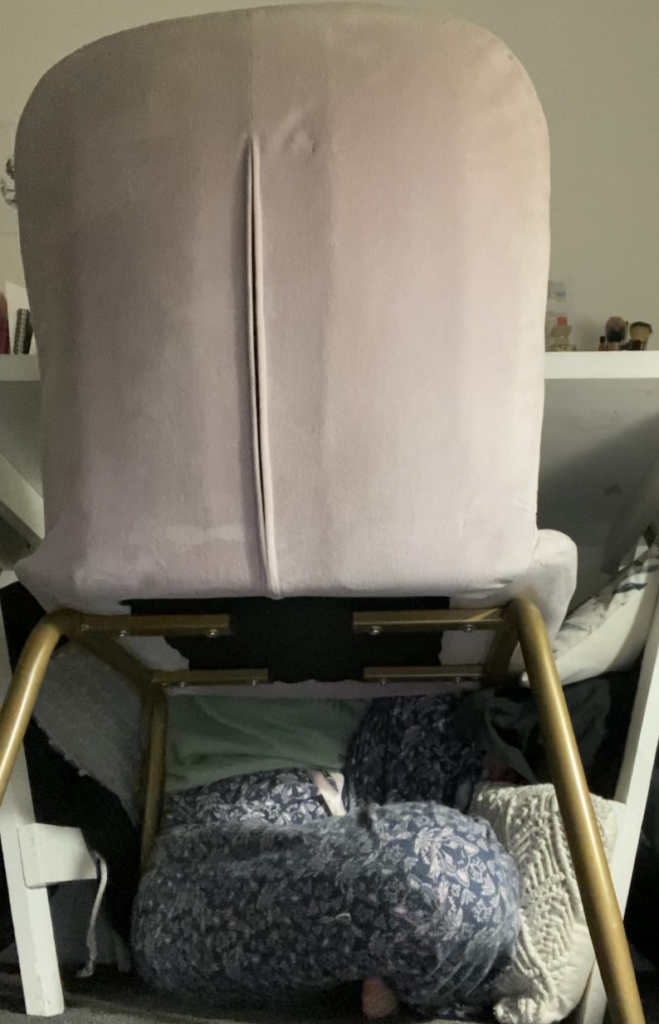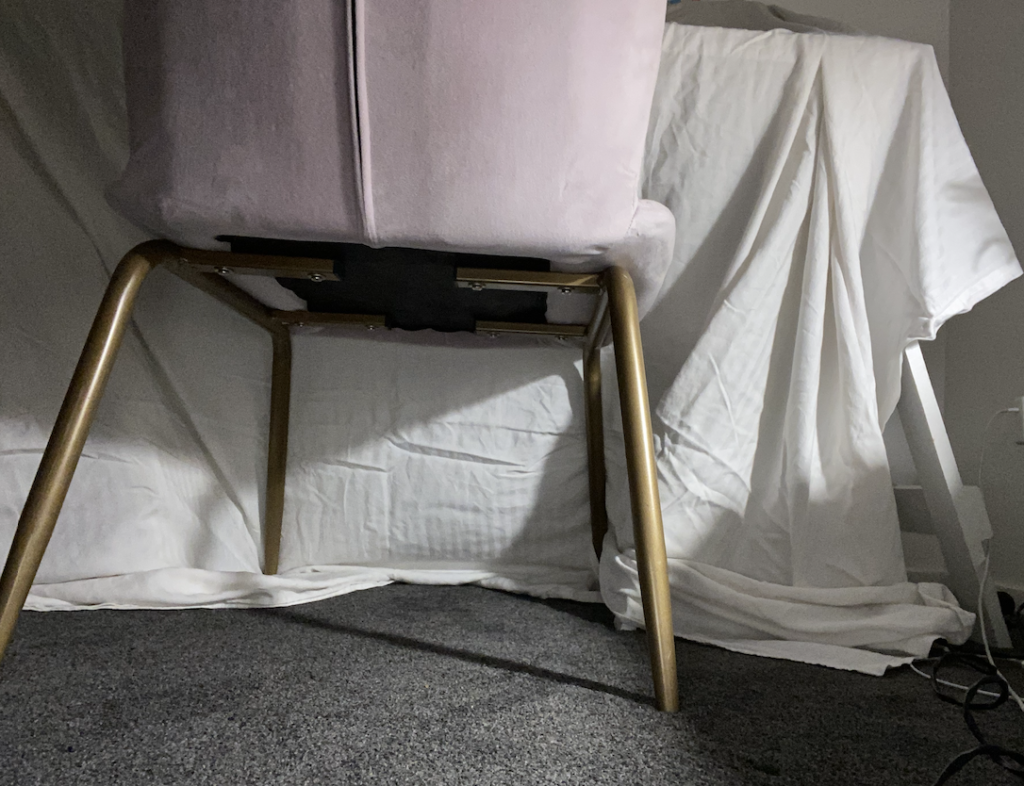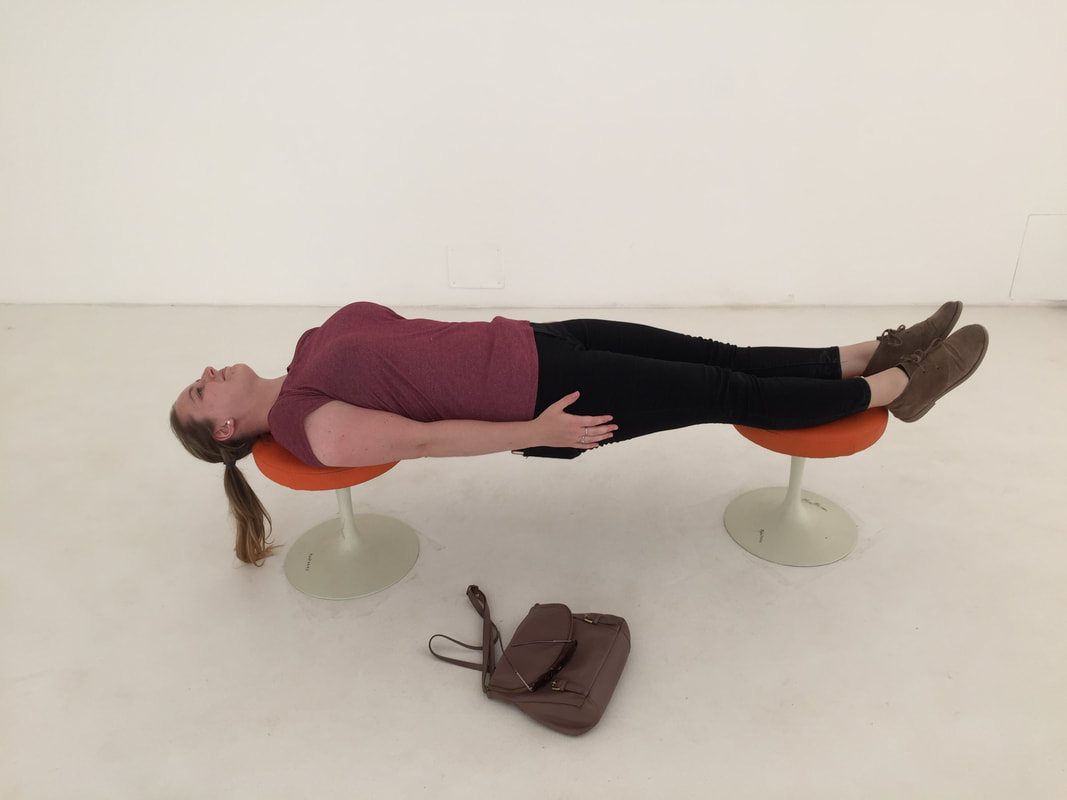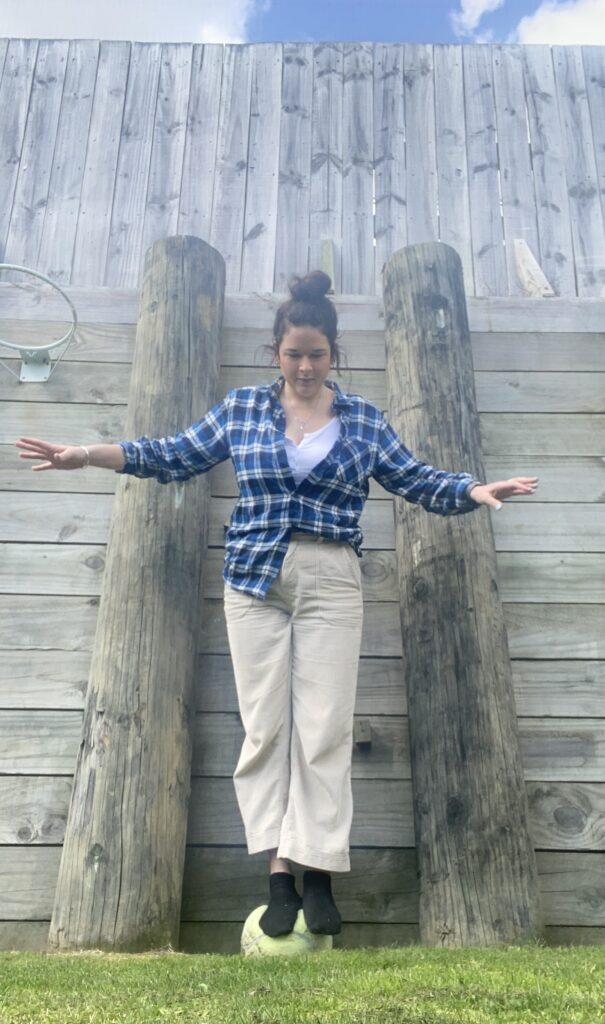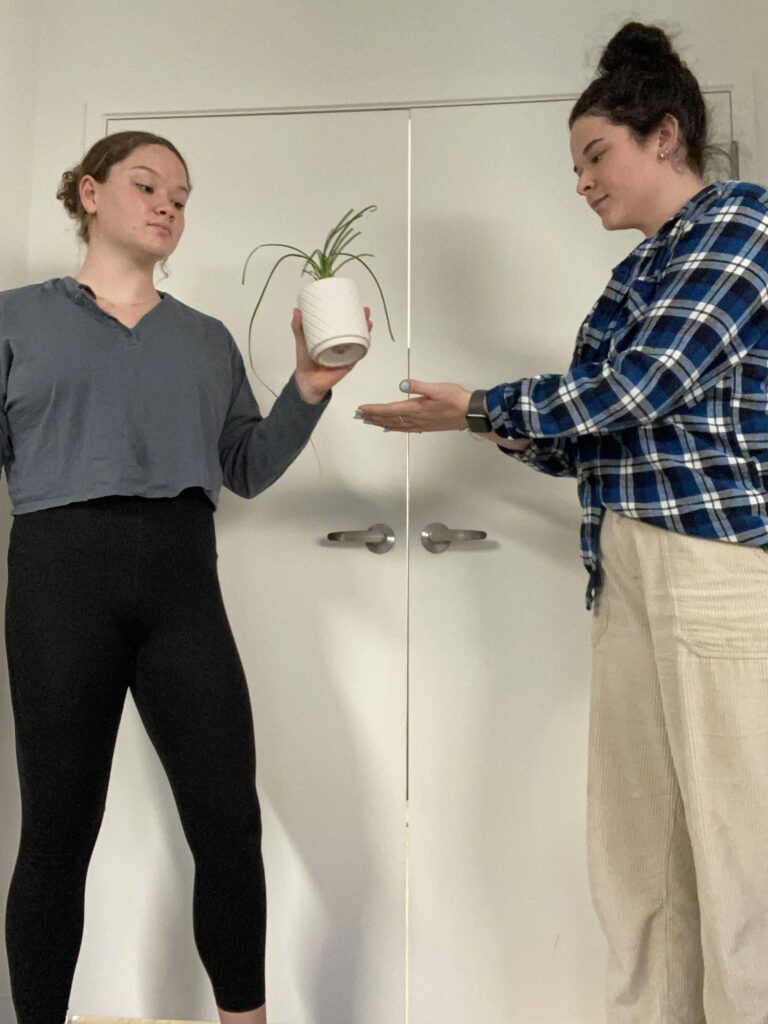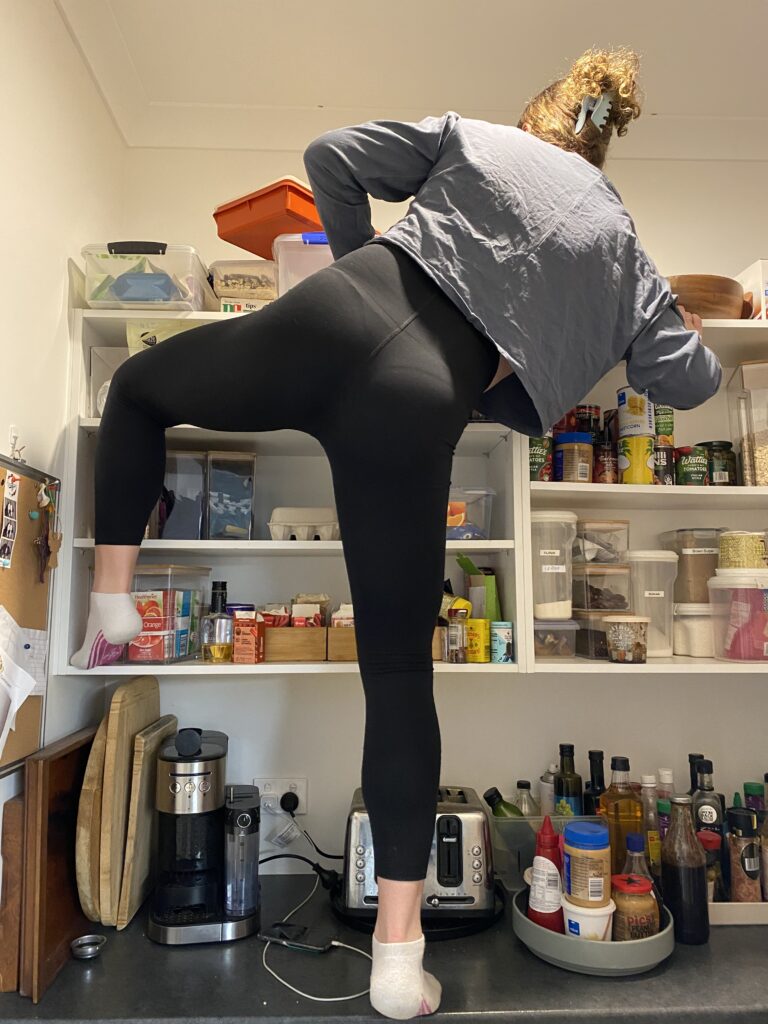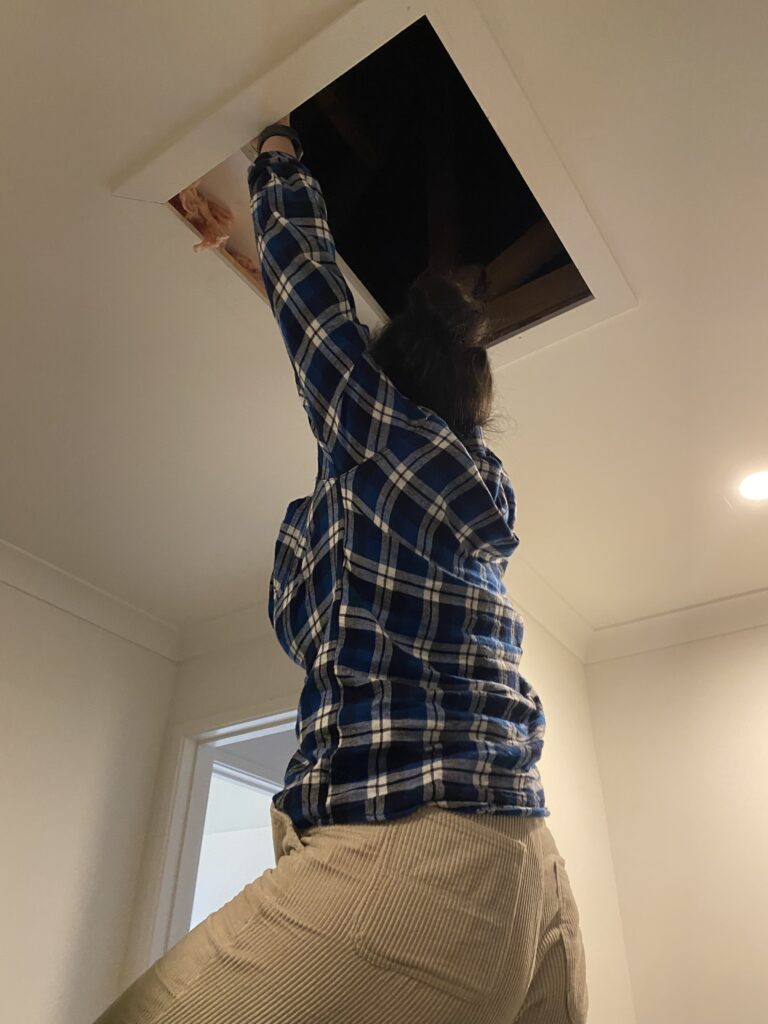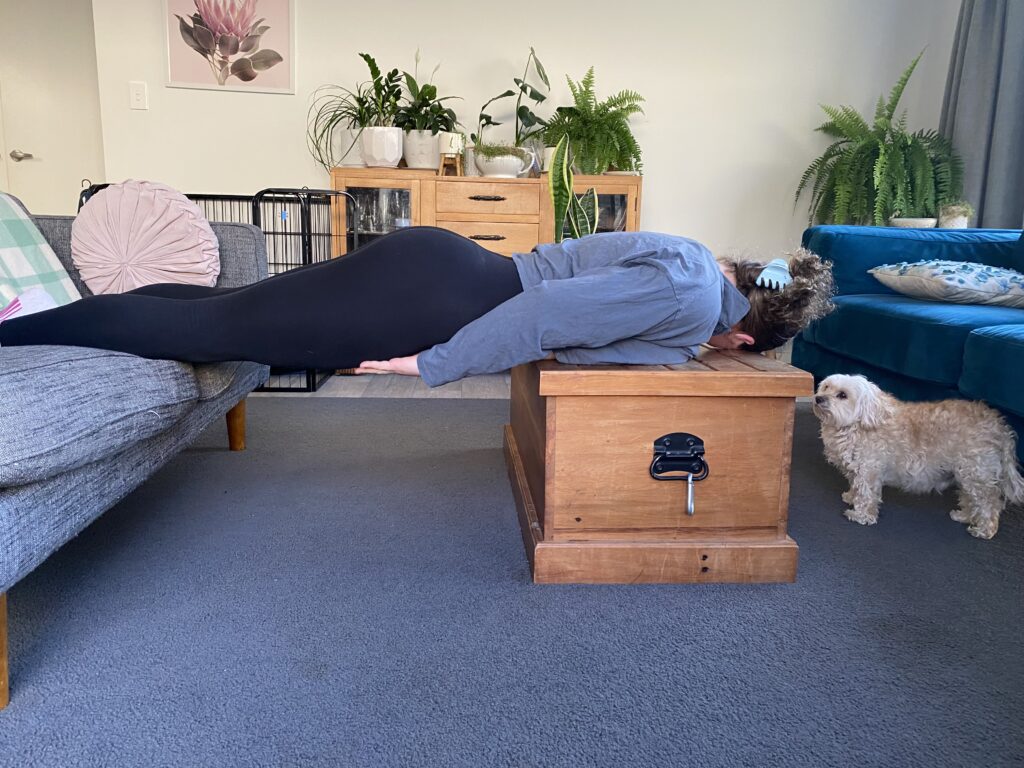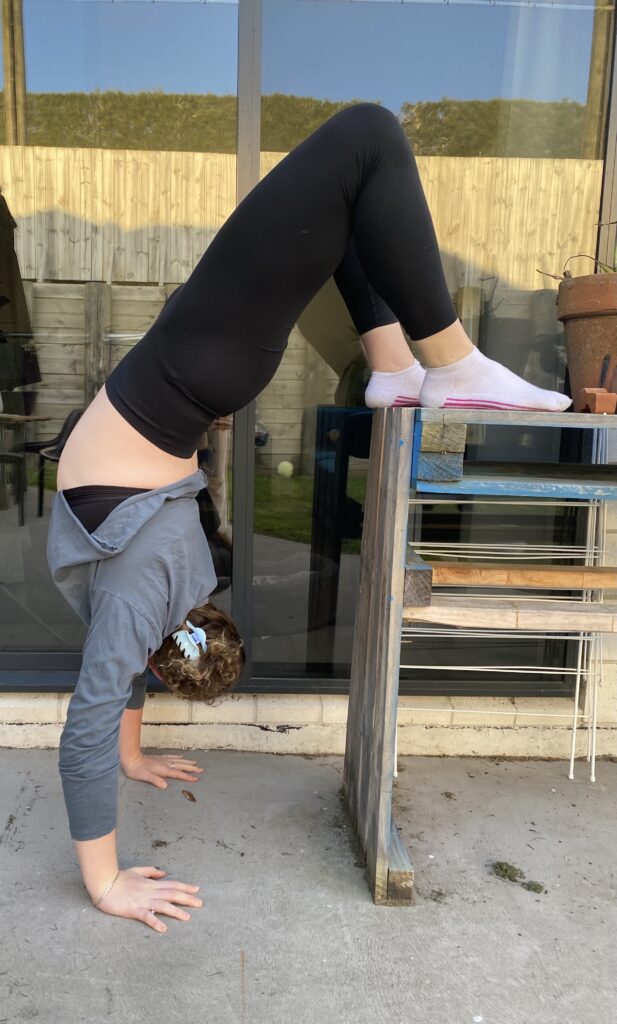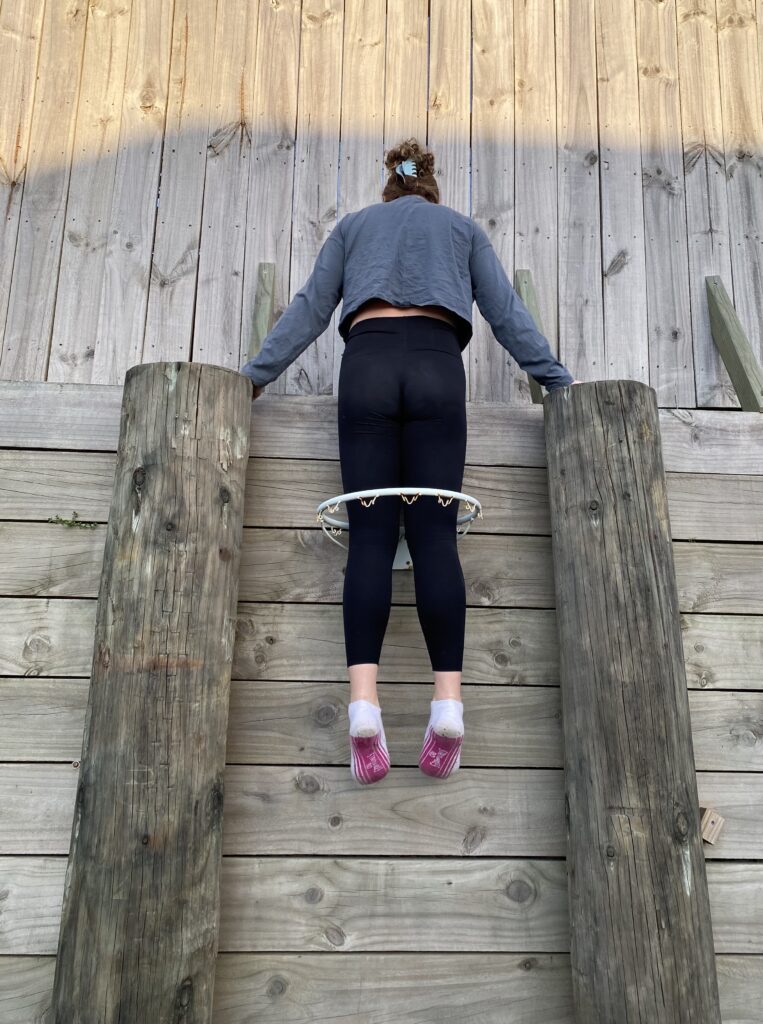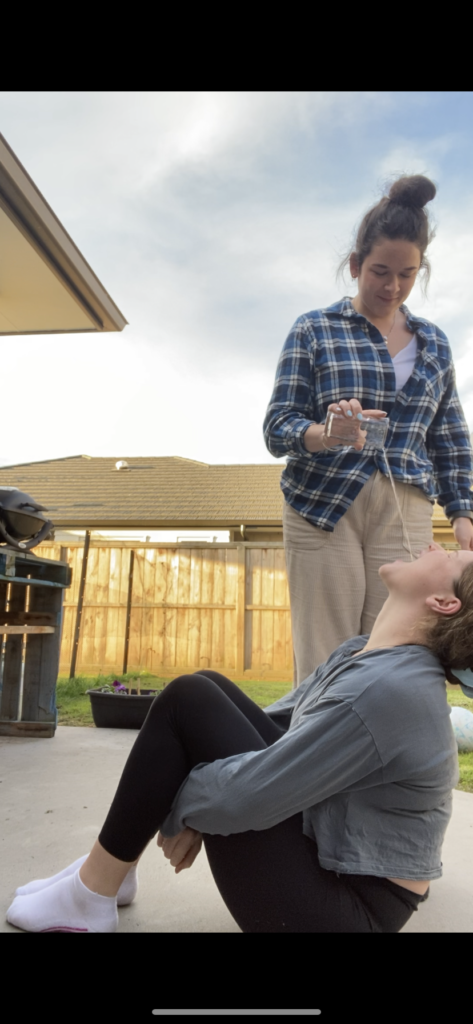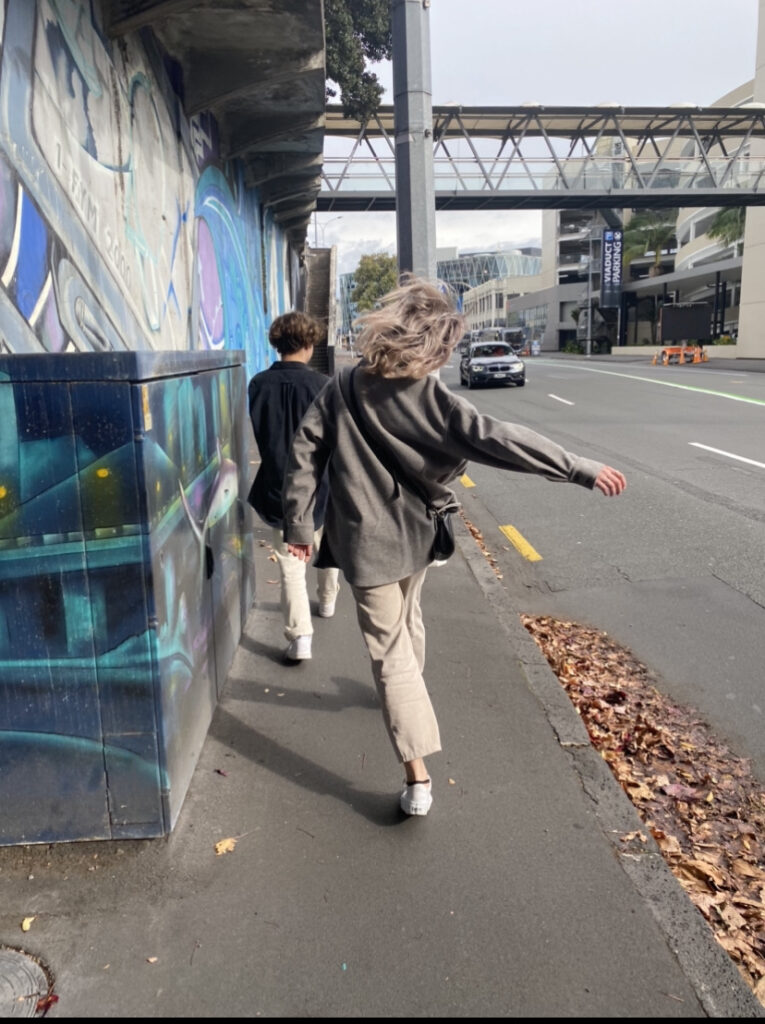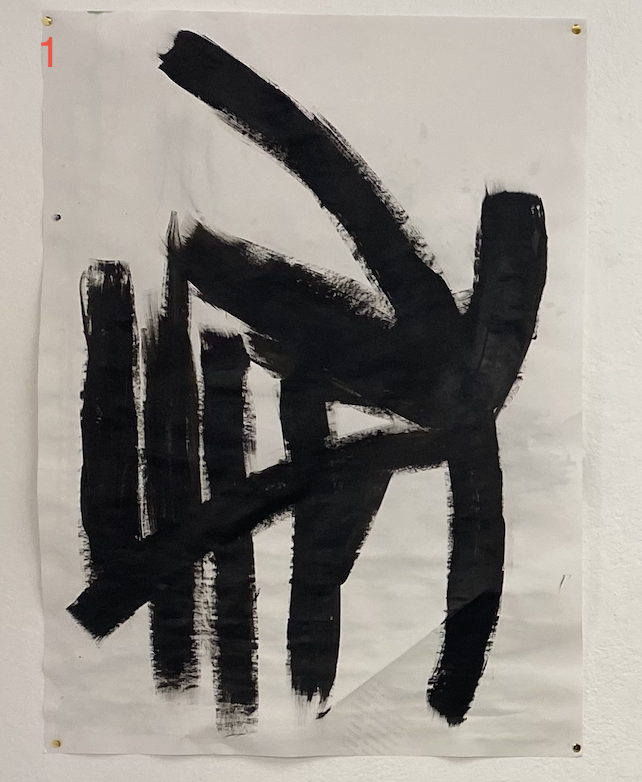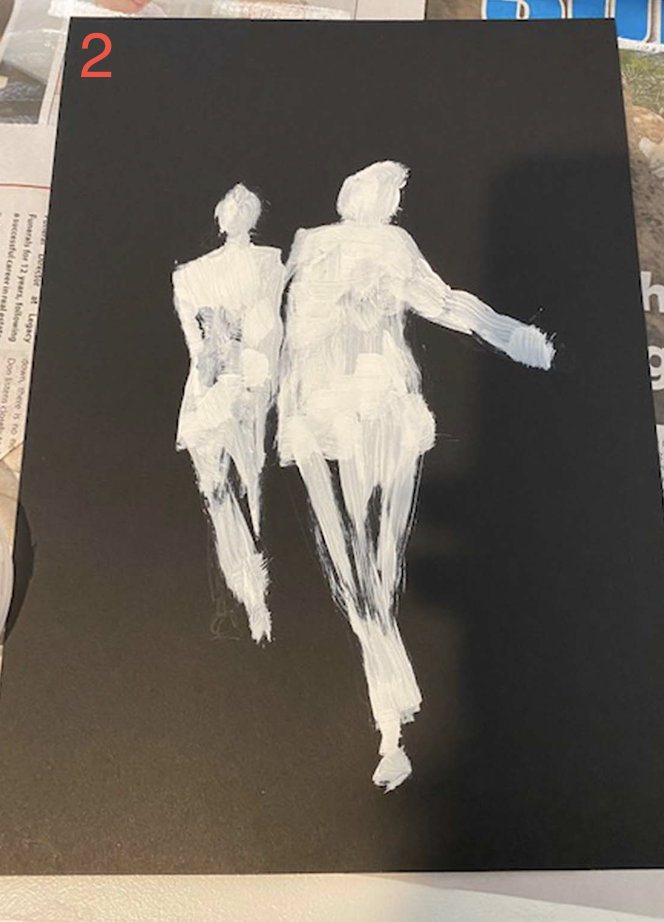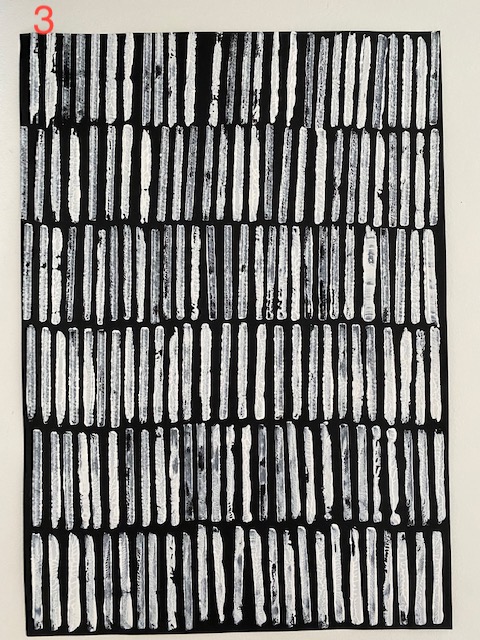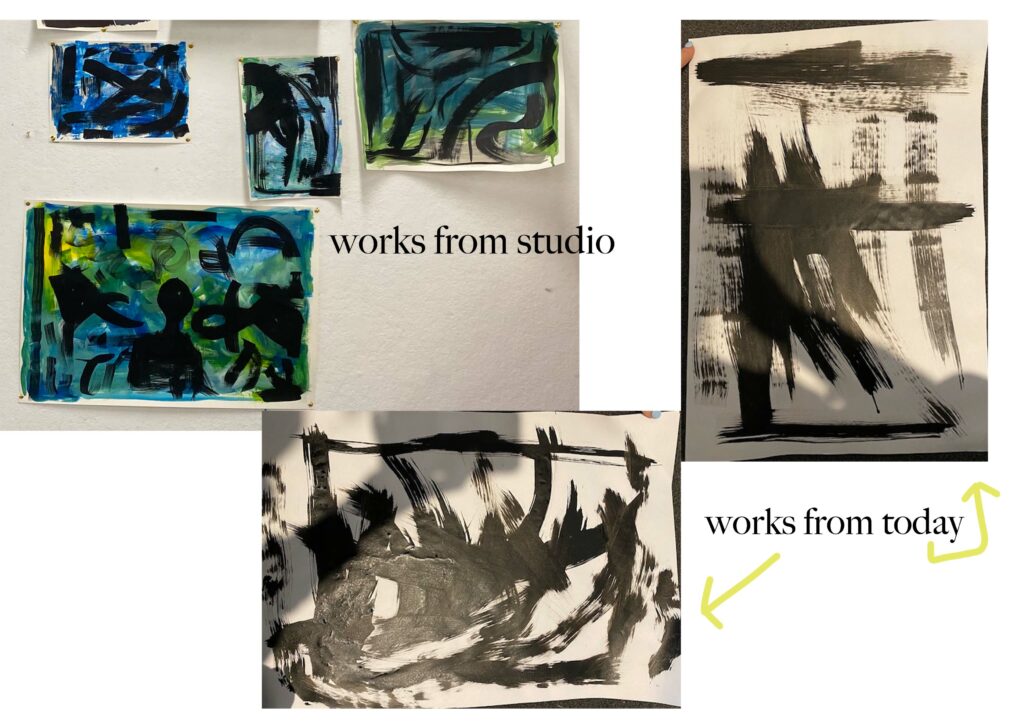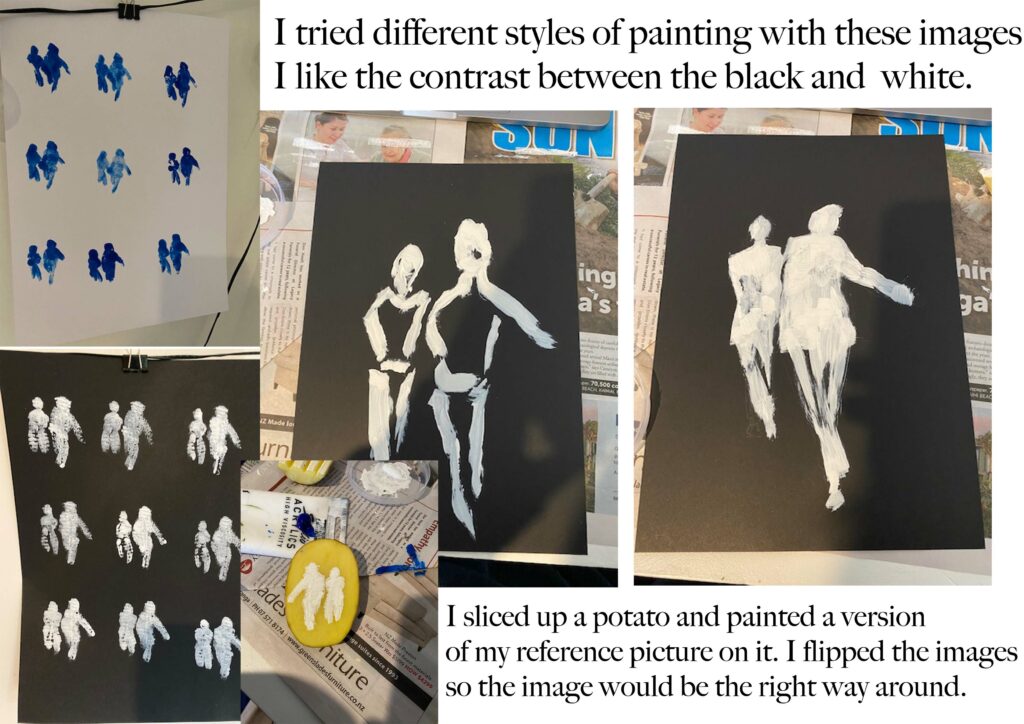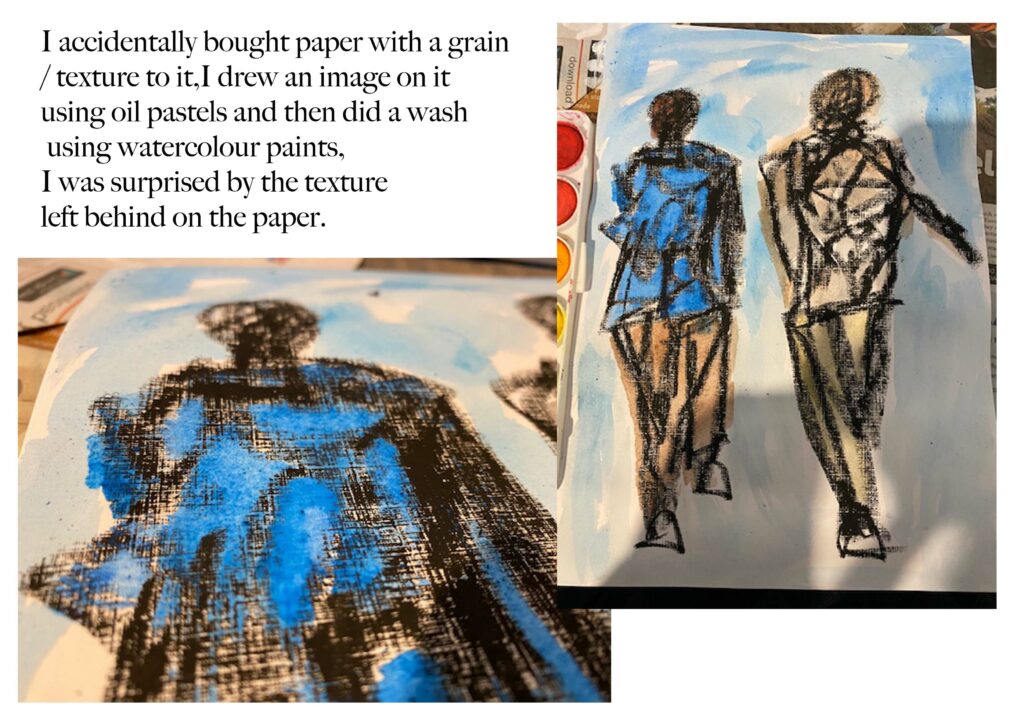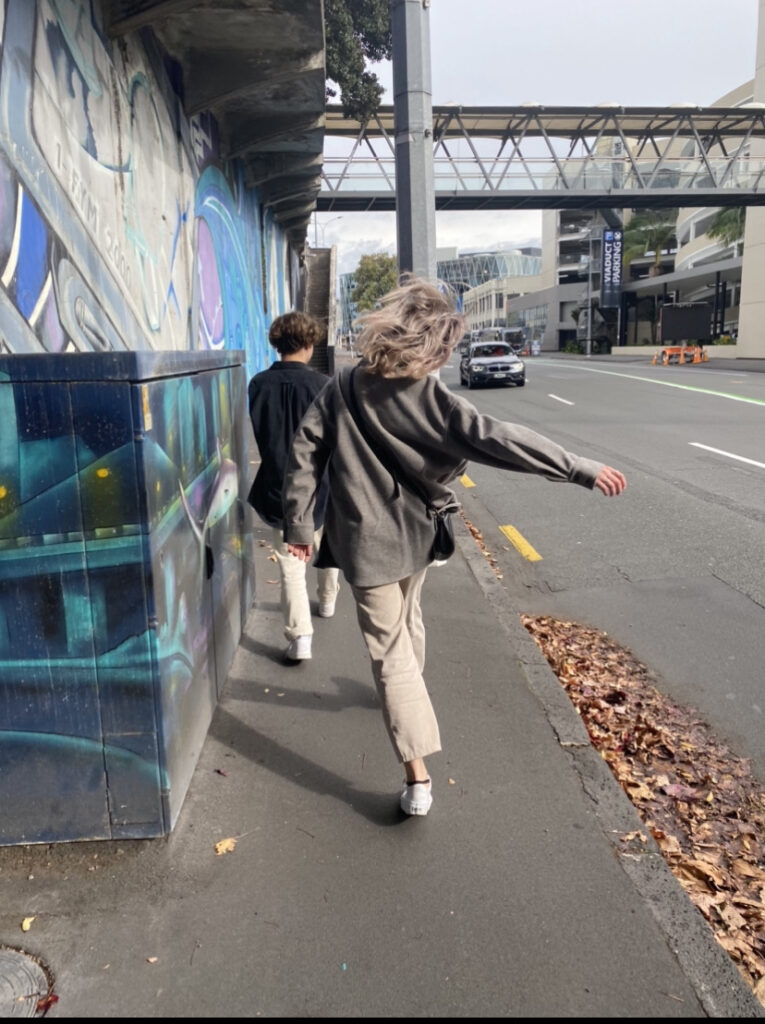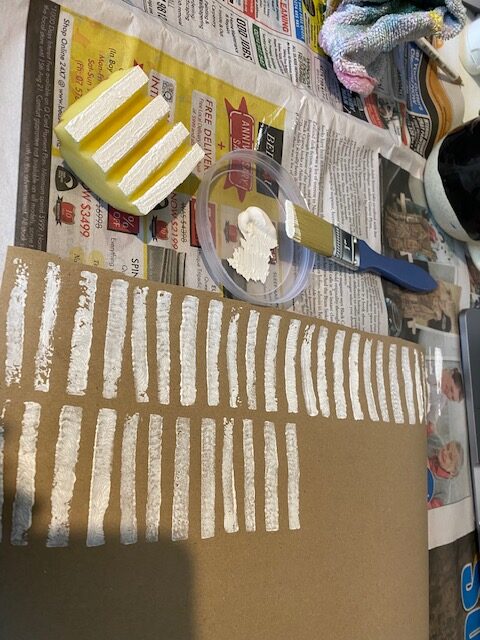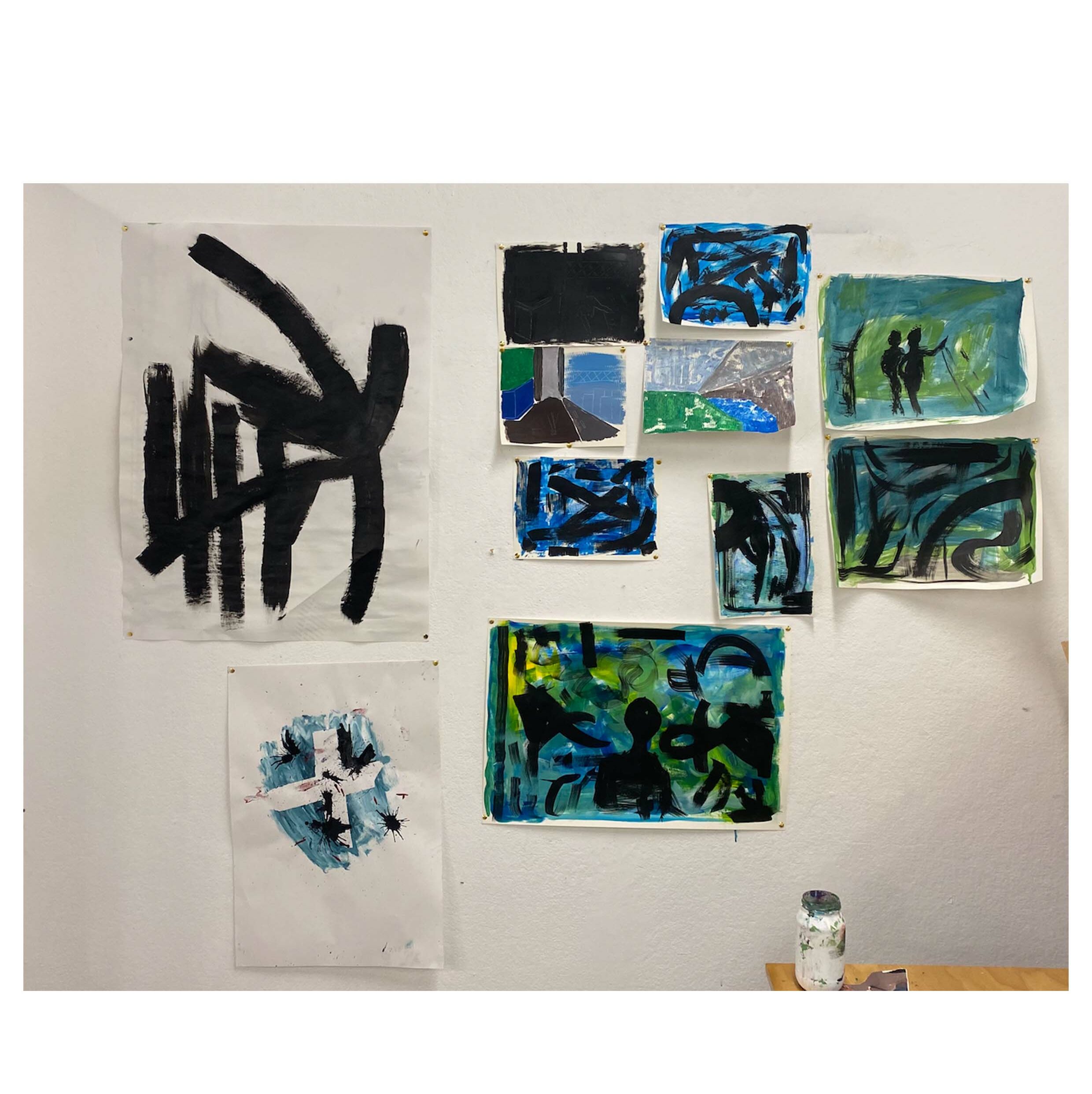At the start of this task, I had a lot of ideas but when it came to the ‘making’ part I didn’t think that any of the ideas were appropriate to the task brief or were too big for the amount of time we have for the task. While I was looking for items I could use for the site intervention I found a pot plan on a stool, these items usually belong indoors in a living room or bedroom but I wanted to see how they intervene with the outside world. I put these items outside in the middle of the road. The plant almost looks as if it is planted in the middle of the road and the pot and stool have been places around it. My second intervention was taking my mirror and placing it outside on the grass; the mirror allows you to see two images at once as if it is a portal to another world. The fact that the mirror is circular and had a very thin outline makes it looks like it has been digitally edited. I saw ladders in my backyard and I instantly thought how much the rungs divided up the ladder shape and made it look similar to a bookshelf. So I collected books from around my house and placed them on the bookshelf (ladder).
